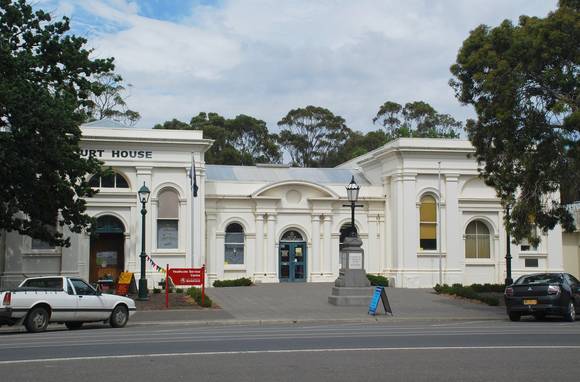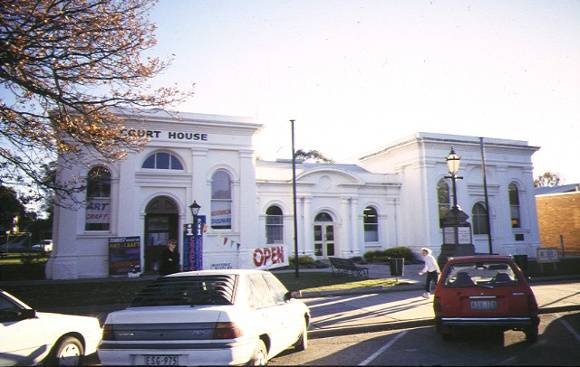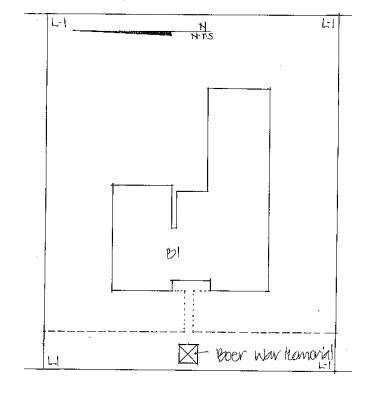| Back to search results » | Back to search page » |
|
FORMER HEATHCOTE COURT HOUSE AND SHIRE COUNCIL CHAMBERS
Location125 HIGH STREET HEATHCOTE, GREATER BENDIGO CITY
File NumberHER/2001/000362LevelRegistered |
|
Statement of Significance
The Former Heathcote Court House and Shire Council Chambers was
constructed in 1863 to the design of Melbourne architect, John
Flannagan and was partially funded by both the local council and the
colonial government. The building is quite unusual for incorporating
the town hall with the court house, and only a small number of other
Victorian local councils had such buildings and of these, very few
survive particularly those dating from the 1860s. Flannagan designed a
similar building for the Hotham Municipal Council in 1862 and this
previous design was used as a model by the Heathcote Council when
lobbying the government for funding. The building when constructed was
a face brick symmetrically arranged building with courthouse and town
hall in large wings on either side of a central entrance bay. The
building is a good example of nineteenth century classicism employing
the inventive and playful mood of mannerist buildings of the Baroque
period. Since construction the building has been rendered with stucco
and features an intact court house interior. The Former Heathcote Court House and Shire Council Chambers is of
historical and architectural importance to the State of Victoria. The Heathcote Town Hall and Court House is of architectural merit as
a well composed building influenced by a style known nominated
Victorian Mannerism, which sought to be inventive and playful within
the tradition of strict classicism. Early nineteenth century British
architects rediscovered Mannerism of the late Renaissance as a style
which released them from cold imitation of Classicism and allowed
freedom and 'character' within their design. The well designed and
prominent building is an unusual and rare surviving integration of an
1860s court house and shire chambers. The building has historical importance as it demonstrates the growth
of the central goldfields area as a consequence of the gold fields and
in particular the period of permanent settlement in the 1860s and
1870s when temporary buildings were replaced with permanent structures
of considerable architectural merit.
Group
Community Facilities
Category
Hall Town Hall






